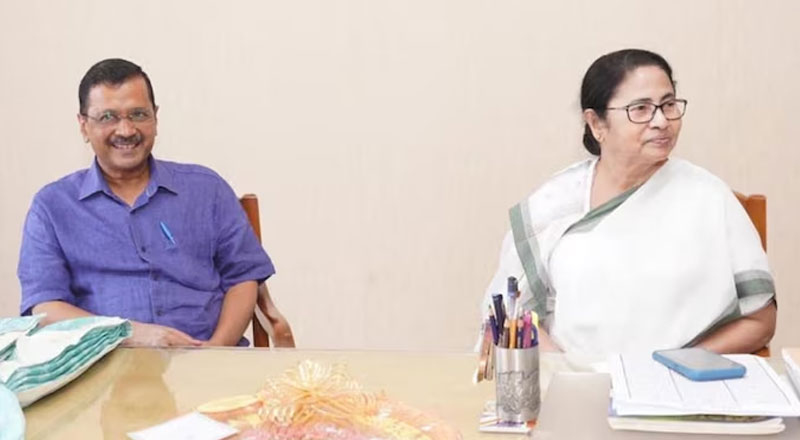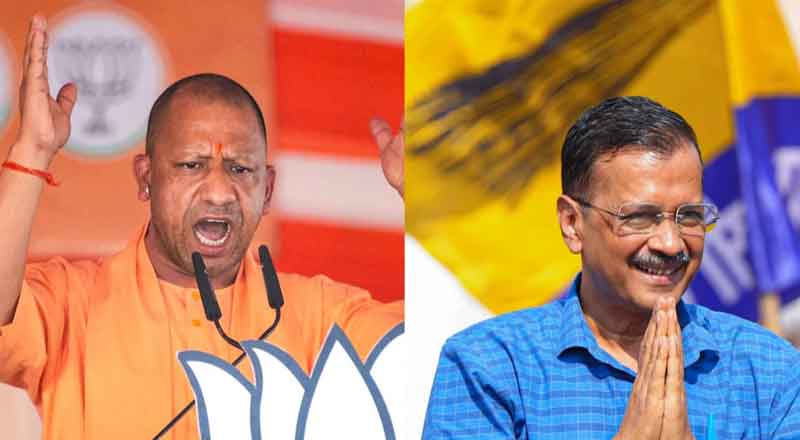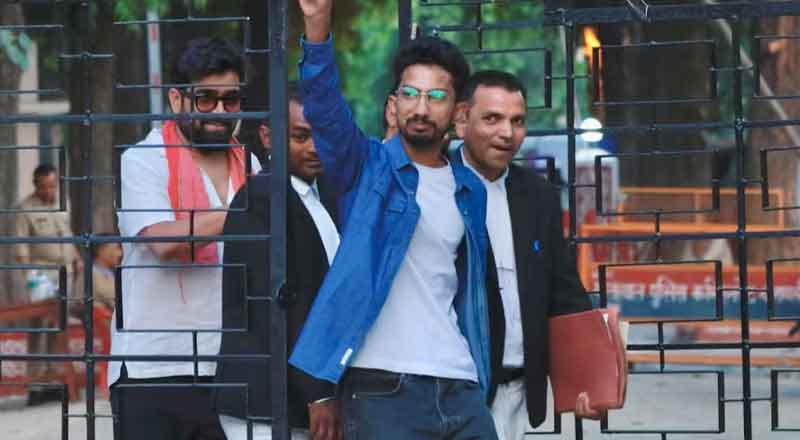West Bengal, Delhi and Punjab, the states ruled by the TMC and AAP, account for 62 Lok Sabha seats, potentially giving the two parties a bargaining chip in any prospective opposition alliance against the BJP
Aam Aadmi Party (AAP) supremo and Delhi chief minister Arvind Kejriwal did not get an invitation to the swearing-in ceremony of the Siddaramaiah cabinet in Karnataka even though it was pitched by the victorious Congress as a show of opposition unity. While this may not have gone down well with Kejriwal, being denied invites would have also upset a host of key opposition leaders—Pinarayi Vijayan, K. Chandrashekar Rao (KCR), Jagan Mohan Reddy and Mayawati, to name a few.
West Bengal chief minister Mamata Banerjee, though invited, gave the event a miss, citing prior engagements. Her conspicuous absence and decision to send a mid-senior-level MP, Kakoli Ghosh Dastidar, to attend the ceremony sends out a message that many parties, despite the Congress’s grand win over the BJP in Karnataka, remain unconvinced about the Grand Old Party being capable of leading any united opposition platform for the Lok Sabha election.
By not going to Bengaluru and holding hands aloft with jubilant Congress leaders, Mamata seems to have given a signal to parties like AAP, KCR’s Bharat Rashtra Samithi (BRS) and the YSR Congress that the aspirations of regional players could not be overlooked for the sake of the larger cause of opposition unity. For these players will get to play the lead role at the regional level and be in a direct contest with the BJP. Mamata has been advocating a one-on-one contest between the BJP and the opposition in states where regional parties hold sway.
The Karnataka victory has definitely given the Congress a boost but its dominance in any opposition coalition may be discomforting for many anti-BJP parties. The May 23 meeting in Kolkata between Mamata and Kejriwal, who are both seen as Congress baiters, therefore, was significant. By coming together within days of the show of opposition unity in Bengaluru, the two leaders have conveyed that with heavyweight regional players in the field, the Congress should not consider it to be in the driver’s seat of any anti-BJP front.
Kejriwal was accompanied by AAP’s Punjab chief minister Bhagwant Mann and party leaders Atishi Singh, Sanjay Singh and Raghav Chadha. Mamata, Kejriwal and Mann and their parties together potentially hold the key to 62 Lok Sabha seats-42 in Bengal, seven in Delhi and 13 in Punjab. These 62 seats could be their bargaining chip in any prospective opposition alliance, more so in light of the Congress’s stock rising after its stupendous win against the BJP in the Karnataka polls.
Kejriwal, officially, met Mamata to seek support to defeat an ordinance brought in by the BJP-led Centre in the Rajya Sabha. The ordinance seeks to override a Supreme Court judgment on the powers of the Delhi government regarding appointments and transfers of officers. Mamata assured AAP leaders of her party’s support in defeating the ordinance.
Even though Mamata appealed to all political parties to come together and vote against the ordinance-a strong message to defeat the BJP-she dodged a question about whether AAP and TMC would extend the appeal to the Congress, which is yet to declare its stand on the issue. She mentioned several non-BJP ruled states and said she would fully support their ruling parties in the fight against the BJP, but did not mention any state where the Congress is in power.
Kejriwal’s good equation with Mamata dates back to almost a decade. Way back in 2015, Mamata had taken Kejriwal on a guided tour of Parliament and introduced him to her known circle of MPs. As a political mentor of sorts, Mamata has been with Kejriwal through thick and thin. She even made sure the AAP leader was invited to H.D. Kumaraswamy’s oath-taking ceremony in Karnataka in 2018.
It was only during the Trinamool Congress’s (TMC) Goa expedition that relations got strained as Kejriwal’s party was a serious player there in the assembly elections of 2017. Moreover, it was also the time when AAP was looking for a toehold in Bengal.
However, over recent years, the TMC and AAP have again come close and may well stick together should things come down to opposing the Congress or demanding boundaries for the Grand Old Party within the prospective opposition alliance. Post-Karnataka, Mamata has offered support to the Congress in 200 Lok Sabha seats in 2024. She will, however, want to have the upper hand in Bengal and so will several other parties that have managed to defeat the BJP hands down in bipolar contests.
While seeking backing in the Rajya Sabha to defeat the Centre’s ordinance, Kejriwal has said that victory on the issue would send a loud message about the power of opposition parties in the Lok Sabha polls should they unite against the BJP. He has even equated the fight against the ordinance to a ‘semifinal’ before 2024.
The way Bihar chief minister Nitish Kumar has taken up the responsibility of bringing all opposition parties, including the Congress, together, it may eventually not be possible for the likes of TMC, AAP and BRS to stay out. But what the three and a couple of other parties can achieve together without compromising on their aims and regional identity will need to be watched out for.
Leaders of both the TMC and AAP are facing the heat from central investigative agencies in alleged scams-perhaps a common meeting point for them? All said and done, both can symbolise what opposing the party in power at the Centre could mean. In fact, they may well argue that they have the real courage to fight the BJP, consequences notwithstanding. And since they have taken the BJP and its aggressive electioneering machinery head on, it would only be wise for the other opposition forces to take them into confidence while cobbling together any anti-BJP platform.
This report is auto-generated . SPO INDIA holds no responsibility for its content.





